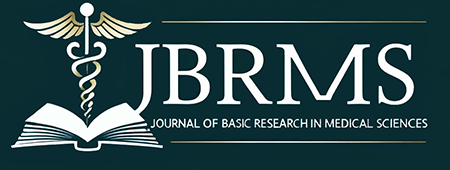Seyed Nabiyollah Hoseini, Asieh Abbassi Daloii, Seyed Javad Ziaolhagh, Ayoub Saeidi,
Volume 7, Issue 2 (3-2020)
Abstract
Introduction: Diabetes is one of the leading causes of mortality in the world. The present study aimed to investigate the effect of aerobic
exercise training and a synthesized insulin nanocomposite hydrogel on TNF-α and IL-6 in type 1 diabetic rats.
Materials and methods: Twenty-five rats were divided into five equal groups of animals each containing five animals, control - healthy, Control-diabetes, Nano-insulin Diabetes, Exercise Diabetes and Nano-insulin Diabetes-Exercise. The exercise training program lasted eight weeks. After the five days of familiarization, exercise time for the exercise groups were as follows: 20 m/min for the first and second weeks, 25 m/min for the third and fourth weeks and 30 m / min for the fifth and sixth weeks. The rats were also given the Nano-insulin supplement. Rats were killed 48 hours after the last training session. Their plasma was taken and used for the analysis of markers.
Results: There were significant differences in IL-6 (P<0.001) and TNF-α (P<0.001) between the groups.
Conclusion: The results of this study showed that aerobic exercise training along with Nano-insulin supplementation significantly reduced TNF-α and IL-6 in rats with type 1 diabetes and these changes were more in the Nano-insulin Diabetes group.
Shahin Riyahi Malayeri, Masoumeh Hoseini,
Volume 8, Issue 1 (1-2021)
Abstract
Introduction: Vaspin and chemerin, secreted from adipose tissue, are associated with insulin resistance. vaspin and chemerin have been shown to increase insulin sensitivity, as well as decrease the risk of diabetes. The purpose of the research was to explain the effect of acute submaximal exercise on vaspin, chemerin and insulin resistance in obese men.
Materials and Methods: Nine obese subjects were randomly selected with age (22.33 ± 1.87) and body mass index (31.16 ± 2.55). The acute exercise was the astrand bicycle ergometer test. The blood samples were taken from subjects before, immediately after exercise, and 30 minutes after exercise. Repeated measures ANOVA with SPSS 24 software were used to analysis of all data.
Results: The results showed a significant decrease in vaspin level after acute exercise (P<0.05). There were no significant changes in insulin resistance and chemerin immediately after acute exercise and 30 minutes after exercise (P>0.05). There was a significant correlation, after exercise, between vaspin and chemerin (P<0.05).
Conclusion: It seems that acute submaximal exercise was effective in decreasing vaspin. But, response of chemerin to submaximal exercise was not significant. However, the exact effects of acute exercise on other adipocytokines are not clear yet.
Elahe Haghighat-Manesh , Ebrahim Alinia-Ahandani , Naeeme Dorri-Mashhadhi , Mohsen Hajihoseini,
Volume 11, Issue 1 (1-2024)
Abstract
Introduction: Pandemics and subsequent lockdowns can profoundly impact the mental well-being of college students. This study aimed to assess the extent of mental health challenges among college students during the initial COVID-19 lockdown in Iran, while also identifying associated factors.
Material & Methods: Conducted as an online cross-sectional study, data were gathered during the first COVID-19 lockdown in Iran (between March 21, 2020, and April 21, 2020). A total of 330 college students participated in an online survey, addressing questions across two parts. The first part encompassed demographic information such as age, gender, marital status, residency status, field of study, academic year, history of COVID-19 infection, presence of COVID-19-infected relatives, and adherence to a regular study schedule. In the second part, students completed the General Health Questionnaire-28 (GHQ-28). Descriptive and linear regression analyses were employed for data analysis.
Results: Among participants, 38.6% reported probable somatic symptoms, 41.8% reported probable anxiety symptoms and sleep disturbances, 91% indicated potential issues with social functioning, and 23.9% reported probable depressive symptoms. Overall, 57.9% experienced potential psychological distress. Notably, adherence to a regular study routine (β = -0.396) emerged as a negative predictor for potential psychological distress, whereas having COVID-19-infected loved ones (β = 0.159) was identified as a positive predictor.
Conclusion: The prevalence of probable somatic symptoms, anxiety, sleep problems, social functioning issues, depressive symptoms, and overall psychological distress was notably high among college students during the initial COVID-19 lockdown. However, maintaining a consistent study schedule, being married, and older age were associated with lower levels of potential psychological distress. Additionally, having loved ones infected with COVID-19 emerged as a risk factor for probable mental health challenges.

